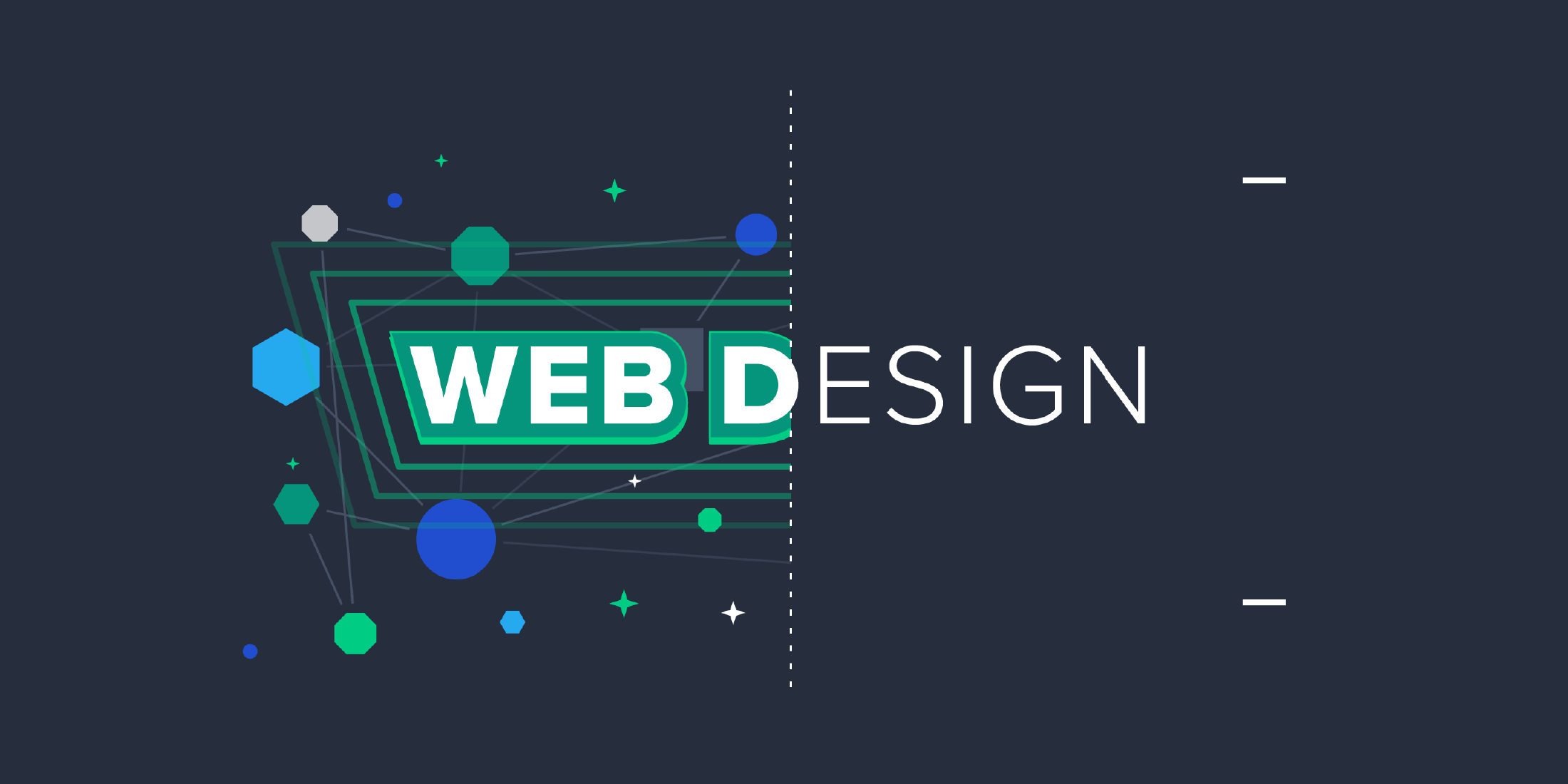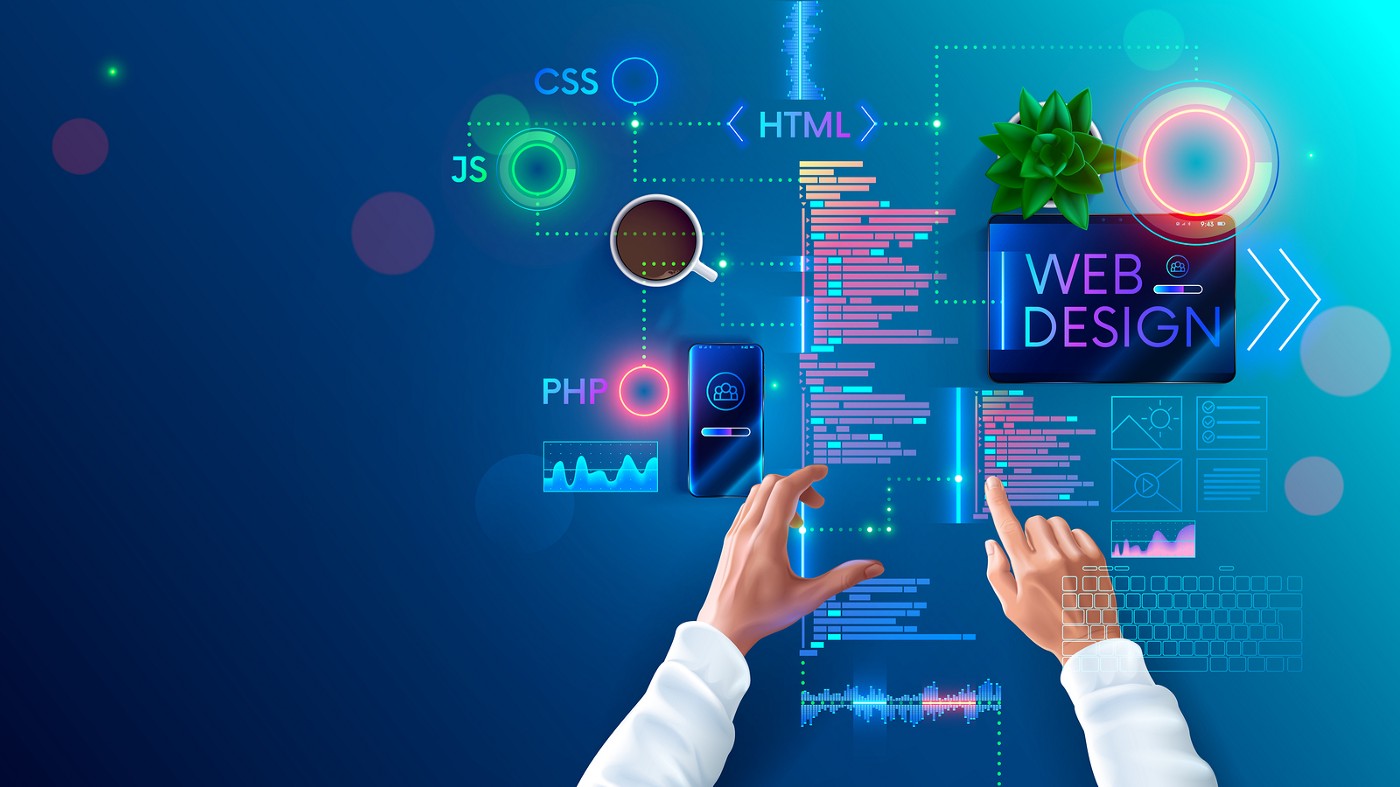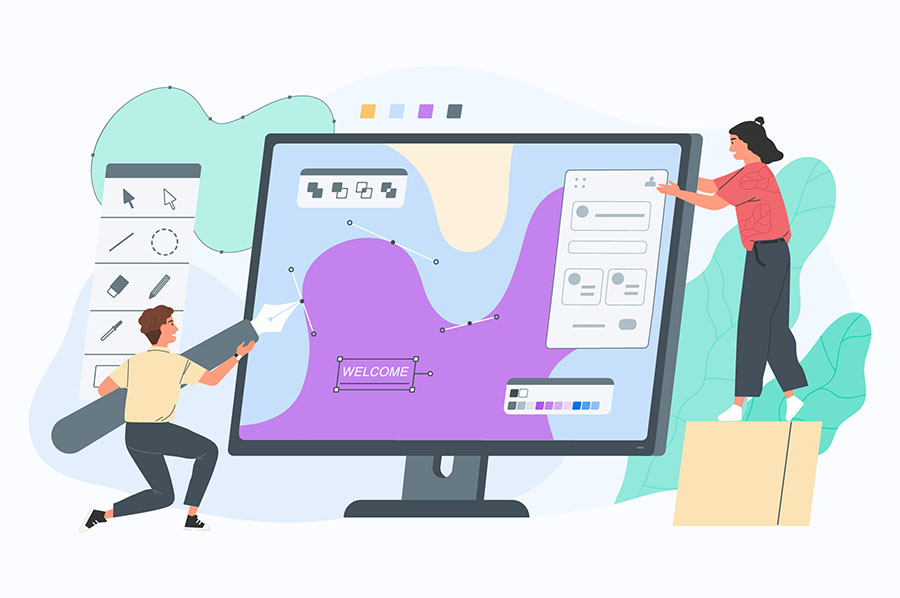All Categories
Featured
Table of Contents
- – Web Design Inspiration : The Best Website Desi...
- – Web Developers And Digital Designers - Bureau...
- – Chavez Web Design: Web Design San Diego - Bak...
- – Web Design Museum 1991 – 2006 Tips and Tricks:
- – Web Design Tutorials By Envato Tuts+ Tips and...
- – What Does A Web Designer Do? - Careerexplorer...
- – Design Principles - U.s. Web Design System (...
- – Chavez Web Design: Web Design San Diego - Ba...
- – What Does A Web Designer Do? - Careerexplore...
- – Google Web Designer - Home Tips and Tricks:
- – Arch Web Design: Top-rated Web Design Agency...
Web Design Inspiration : The Best Website Design Ideas Tips and Tricks:
Quick summary Functionality and the energy, not the visual style, determine the success or failure of a website. Because the visitor of the page is the only person who clicks the mouse and for that reason chooses whatever, user-centric design has established as a basic technique for successful and profit-oriented web design - web design frederick md.
and the energy, not the visual design, figure out the success or failure of a site. Since the visitor of the page is the only individual who clicks the mouse and for that reason chooses everything, user-centric design has actually become a basic approach for successful and profit-oriented website design. After all, if users can't utilize a feature, it might too not exist.
g. where the search box should be placed) as it has currently been carried out in a variety of posts; instead we concentrate on the techniques which, utilized correctly, can result in more sophisticated design choices and streamline the process of viewing presented info. Please observe that you may be interested in the usability-related articles we've published prior to: Concepts Of Excellent Website Design And Effective Web Design Guidelines, In order to use the concepts appropriately we initially require to comprehend how users interact with websites, how they believe and what are the fundamental patterns of users' habits.
Web Developers And Digital Designers - Bureau Of Labor ... Tips and Tricks:
Visitors glance at each new page, scan a few of the text, and click the first link that captures their interest or slightly resembles the thing they're looking for. In truth, there are large parts of the page they don't even take a look at. Many users search for something intriguing (or helpful) and clickable; as soon as some appealing prospects are discovered, users click.
If a page offers users with high-quality content, they want to compromise the content with advertisements and the design of the site. This is the reason that not-that-well-designed websites with top quality content gain a lot of traffic over years. Content is more crucial than the design which supports it.

Users do not check out, they scan. Notification how "hot" locations abrupt in the middle of sentences. This is typical for the scanning process. Really easy concept: If a website isn't able to satisfy users' expectations, then designer stopped working to get his task done appropriately and the company loses cash. The greater is the cognitive load and the less user-friendly is the navigation, the more willing are users to leave the website and search for options.
Chavez Web Design: Web Design San Diego - Bakersfield ... Tips and Tricks:
Neither do they scan webpage in a linear fashion, going sequentially from one site section to another one. Rather users satisfice; they choose the very first affordable choice. As soon as they find a link that appears like it might lead to the goal, there is a great opportunity that it will be right away clicked.
It doesn't matter to us if we understand how things work, as long as we can use them. If your audience is going to imitate you're creating signboard, then design excellent billboards." Users desire to have the ability to manage their internet browser and depend on the consistent data presentation throughout the website.
If the navigation and website architecture aren't intuitive, the variety of concern marks grows and makes it harder for users to understand how the system works and how to receive from point A to point B. A clear structure, moderate visual hints and easily identifiable links can assist users to discover their course to their objective.
Web Design Museum 1991 – 2006 Tips and Tricks:

claims to be "beyond channels, beyond items, beyond circulation". What does it imply? Given that users tend to check out websites according to the "F"-pattern, these three statements would be the very first aspects users will see on the page once it is packed. Although the style itself is easy and instinctive, to comprehend what the page has to do with the user needs to browse for the response.
Once you have actually accomplished this, you can communicate why the system is beneficial and how users can gain from it. Individuals will not use your web site if they can't find their way around it. 2. Don't Waste Users' Patience, In every project when you are going to provide your visitors some service or tool, try to keep your user requirements very little.
Novice visitors want to, not filling long web kinds for an account they might never utilize in the future. Let users check out the website and discover your services without forcing them into sharing personal information. It's not affordable to require users to go into an email address to evaluate the function.
Web Design Tutorials By Envato Tuts+ Tips and Tricks:
Stikkit is a best example for an easy to use service which needs almost absolutely nothing from the visitor which is unobtrusive and comforting. And that's what you desire your users to feel on your web website. Obviously, Mite requires more. Nevertheless the registration can be carried out in less than 30 seconds as the form has horizontal orientation, the user does not even need to scroll the page.
A user registration alone is adequate of an impediment to user navigation to cut down on inbound traffic. Handle To Focus Users' Attention, As sites provide both static and vibrant material, some elements of the user interface attract attention more than others do.
Focusing users' attention to specific areas of the website with a moderate use of visual components can help your visitors to receive from point A to point B without thinking of how it really is expected to be done. The less enigma visitors have, the they have and the more trust they can establish towards the company the site represents.
What Does A Web Designer Do? - Careerexplorer Tips and Tricks:
4. Strive For Feature Exposure, Modern website design are generally criticized due to their technique of guiding users with visually appealing 1-2-3-done-steps, big buttons with visual results and so on. From the style viewpoint these aspects actually aren't a bad thing. On the contrary, such as they lead the visitors through the site content in a very easy and user-friendly way.
The site has 9 main navigation alternatives which show up at the first glimpse. The choice of colors might be too light, though. is a basic principle of effective user interface design. It doesn't truly matter how this is achieved. What matters is that the content is well-understood and visitors feel comfy with the method they interact with the system.
com gets straight to the point. No cute words, no overemphasized statements. Instead a cost: simply what visitors are trying to find. An optimum solution for reliable writing is touse brief and concise expressions (come to the point as quickly as possible), usage scannable layout (classify the content, utilize multiple heading levels, use visual elements and bulleted lists which break the circulation of consistent text blocks), use plain and objective language (a promo does not need to seem like advertisement; offer your users some affordable and objective reason they need to use your service or stay on your site)6.
Design Principles - U.s. Web Design System (Uswds) Tips and Tricks:
Users are hardly ever on a website to enjoy the design; moreover, in many cases they are looking for the information regardless of the style - web design frederick md. Pursue simplicity instead of intricacy. From the visitors' viewpoint, the best website style is a pure text, with no ads or additional content blocks matching exactly the inquiry visitors utilized or the material they've been trying to find.
Finch clearly provides the info about the website and offers visitors a choice of alternatives without overcrowding them with unnecessary material. Not only does it help to for the visitors, however it makes it possible to perceive the details provided on the screen.
Complex structures are harder to read, scan, evaluate and deal with. If you have the option between separating 2 style sections by a noticeable line or by some whitespace, it's normally much better to use the whitespace service. (Simon's Law): the better you manage to supply users with a sense of visual hierarchy, the much easier your material will be to perceive.
Chavez Web Design: Web Design San Diego - Bakersfield ... Tips and Tricks:
The same conventions and rules ought to be used to all elements.: do the most with the least quantity of hints and visual components. 4 significant indicate be thought about: simplicity, clarity, diversity, and focus. Simpleness includes only the components that are essential for communication. Clarity: all components must be designed so their meaning is not uncertain.
Conventions Are Our Good friends, Conventional design of site aspects does not result in a dull web site. As they lower the discovering curve, the need to figure out how things work. It would be an usability nightmare if all sites had various visual presentation of RSS-feeds. That's not that various from our routine life where we tend to get used to basic concepts of how we organize data (folders) or do shopping (placement of products).
comprehend what they're anticipating from a website navigation, text structure, search positioning etc. A typical example from usability sessions is to translate the page in Japanese (presuming your web users don't understand Japanese, e. g. with Babelfish) and provide your use testers with a task to discover something in the page of various language.
What Does A Web Designer Do? - Careerexplorer Tips and Tricks:
Steve Krug suggests that it's better to, however benefit from conventions when you don't. 10. Test Early, Test Often, This so-called TETO-principle ought to be applied to every website design job as usability tests typically provide into significant problems and issues associated with a given layout. Test not far too late, not too little and not for the incorrect reasons.
Some important points to bear in mind: according to Steve Krug, and testing one user early in the project is better than testing 50 near completion. Accoring to Boehm's very first law, mistakes are most regular throughout requirements and style activities and are the more costly the later they are removed.
That suggests that you develop something, test it, fix it and then check it once again. There might be issues which haven't been discovered throughout the preliminary as users were almost obstructed by other issues. usability tests. Either you'll be indicated the problems you have or you'll be pointed to the absence of significant style flaws which is in both cases an useful insight for your job.
Google Web Designer - Home Tips and Tricks:
This holds for designers. After you've worked on a site for couple of weeks, you can't observe it from a fresh point of view anymore. You understand how it is built and therefore you understand exactly how it works you have the wisdom independent testers and visitors of your site would not have.
It can be connected to other locations such as graphic style, user experience, and multimedia arts, however is more appropriately seen from a technological perspective. It has actually ended up being a big part of individuals's everyday lives. It is tough to picture the Internet without animated graphics, various styles of typography, background, videos and music.

Throughout 1991 to 1993 the World Wide Web was born. Text-only pages could be seen using a basic line-mode internet browser. There had been no integrated approach to graphic design elements such as images or noises.
Arch Web Design: Top-rated Web Design Agency For Saas ... Tips and Tricks:
The W3C was developed in October 1994 to "lead the Internet to its full capacity by developing typical procedures that promote its advancement and guarantee its interoperability." This discouraged any one business from monopolizing a propriety internet browser and shows language, which could have changed the effect of the Web as a whole.
As this has actually happened the technology of the web has also carried on. There have actually likewise been significant changes in the method people use and access the web, and this has actually changed how sites are designed. Given that the end of the internet browsers wars [] brand-new browsers have actually been launched. A number of these are open source suggesting that they tend to have faster development and are more supportive of new requirements.
Learn more about Lovell Media Group LLC or TrainACETable of Contents
- – Web Design Inspiration : The Best Website Desi...
- – Web Developers And Digital Designers - Bureau...
- – Chavez Web Design: Web Design San Diego - Bak...
- – Web Design Museum 1991 – 2006 Tips and Tricks:
- – Web Design Tutorials By Envato Tuts+ Tips and...
- – What Does A Web Designer Do? - Careerexplorer...
- – Design Principles - U.s. Web Design System (...
- – Chavez Web Design: Web Design San Diego - Ba...
- – What Does A Web Designer Do? - Careerexplore...
- – Google Web Designer - Home Tips and Tricks:
- – Arch Web Design: Top-rated Web Design Agency...
Latest Posts
Law Firm Website Design, Attorney Web Design, Lawyer ... Tips and Tricks:
What Is A Web Designer? (2022 Guide) - Brainstation® Tips and Tricks:
Web Design And Development - Invision Tips and Tricks:
More
Latest Posts
Law Firm Website Design, Attorney Web Design, Lawyer ... Tips and Tricks:
What Is A Web Designer? (2022 Guide) - Brainstation® Tips and Tricks:
Web Design And Development - Invision Tips and Tricks: